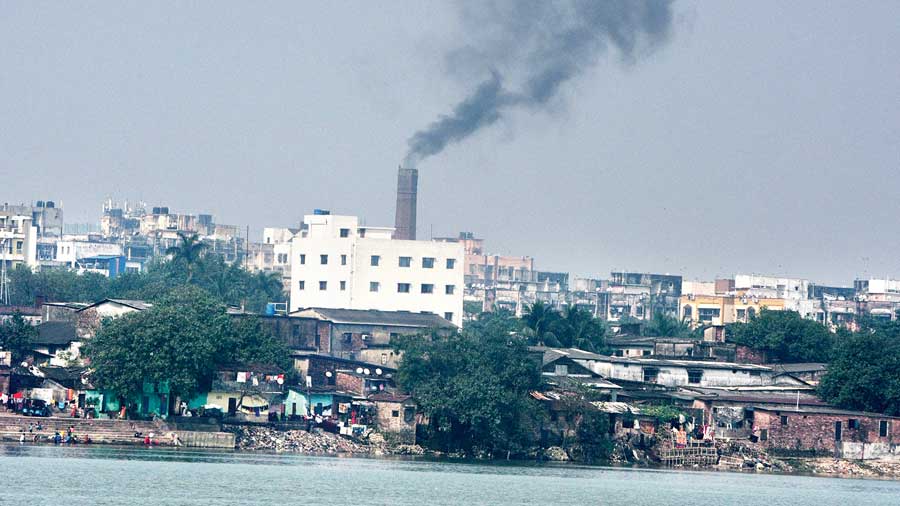
Study plays down risk of deaths tied to pollution : Findings imply that rising PM2.5 levels have added extra stroke deaths in the country
Don't Miss
Findings imply that rising PM2.5 levels have added extra stroke deaths in the country
 |
| Multiple studies in Europe and the US have established that air pollution contributes to extra deaths resulting from heart and respiratory disease.: File Photo |
GS Mudur | TT | New Delhi | 25.10.22 : A new study has surprisingly found no excess risk of premature deaths in India from respiratory disease or heart disease linked to air pollution, implying that current estimates of India’s mortality from air pollution are exaggerated.
The study that analysed air pollution trends and deaths at over 7,500 sample sites across India found a 9 per cent excess risk of stroke deaths for every 10-unit rise in tiny particulate matter (PM2.5). But it observed no such excess risk of respiratory or heart disease.
The findings, published in the journal Environmental Health Perspectives, imply that rising PM2.5 levels have added extra stroke deaths in the country but not extra deaths from heart disease or respiratory disease.
“PM2.5 may not be as big a killer in India as has been touted,” said Prabhat Jha, an epidemiologist and global health expert at the University of Toronto, who led the study. “The current estimates for PM2.5 deaths in India are far too high,” he told The Telegraph.
Earlier studies, based largely on modelling and the extrapolation of how air pollution affects the disease burden, had estimated 1.1 million air-pollution-linked deaths in 2016 and 1.6 million in 2019, with nearly two-thirds attributed to respiratory and heart disease.
The new study’s findings, if true, suggest the need for a substantial downward revision of earlier estimates of air pollution deaths -- such as 290,000 deaths from chronic respiratory disease and 390,000 deaths from coronary artery disease estimated in 2016.
Multiple studies in Europe and the US have established that air pollution contributes to extra deaths resulting from heart and respiratory disease. A 2019 study, for instance, had estimated that air pollution had caused 790,000 extra deaths across Europe during 2015, 40 per cent from heart disease and 27 per cent from respiratory system disorders.
“Estimates for PM2.5 deaths in India should not be made until more reliable studies are done that quantify the relationship of PM2.5 exposure and deaths,” Jha said. “Simply relying on extrapolation from models based on western populations is a disservice to Indians.”
But, Jha said, action to reduce PM2.5 exposure is still required as air pollution worsens child lung health and lowers the quality of life by exacerbating respiratory disorders.
Jha and his colleagues used satellite data to track PM2.5 trends and analysed 200,000 actual deaths at 7,500 sites across India as part of a Million Death Study, initiated more than 15 years ago to determine the myriad causes of death across the country.
The Million Death Study uses a method called verbal autopsy that involves questioning members of households and collecting information about the deceased to assign a probable cause of death.
They observed that exposure to PM2.5 concentrations had increased over the past two decades. The average levels increased from 25 micrograms per cubic metre in 1998-2000 to 40 micrograms per cubic metre in 2012-14, with pollution hotspots spread across the northern Gangetic plains.
“Most existing studies on air quality and health are done in high-income countries where the PM2.5 exposures are far lower and disease patterns are substantially different from those in low- and middle-income countries such as India,” said George D’Souza, a respiratory medicine specialist at St John’s Medical College, Bangalore, and study team member.
The absence of excess risk of death from pollution-linked respiratory or heart disease may reflect differences in susceptibility to PM2.5 between the Western and Indian populations, or a difference in the composition and resulting toxicity of PM2.5 exposure in India.
The Indian Council of Medical Research (ICMR), the US National Institutes of Health, and the Canadian Institutes of Health Research supported the new study.
The team members included Kalpana Balakrishnan, a Chennai-based researcher who had participated in studies that had yielded some of the earlier estimates of India’s air pollution mortality; ICMR researchers, and Randeep Guleria, a respiratory medicine specialist at the All India Institute of Medical Sciences, New Delhi.


0 Response to "Study plays down risk of deaths tied to pollution : Findings imply that rising PM2.5 levels have added extra stroke deaths in the country"
Post a Comment
Disclaimer Note:
The views expressed in the articles published here are solely those of the author and do not necessarily reflect the official policy, position, or perspective of Kalimpong News or KalimNews. Kalimpong News and KalimNews disclaim all liability for the published or posted articles, news, and information and assume no responsibility for the accuracy or validity of the content.
Kalimpong News is a non-profit online news platform managed by KalimNews and operated under the Kalimpong Press Club.
Comment Policy:
We encourage respectful and constructive discussions. Please ensure decency while commenting and register with your email ID to participate.
Note: only a member of this blog may post a comment.